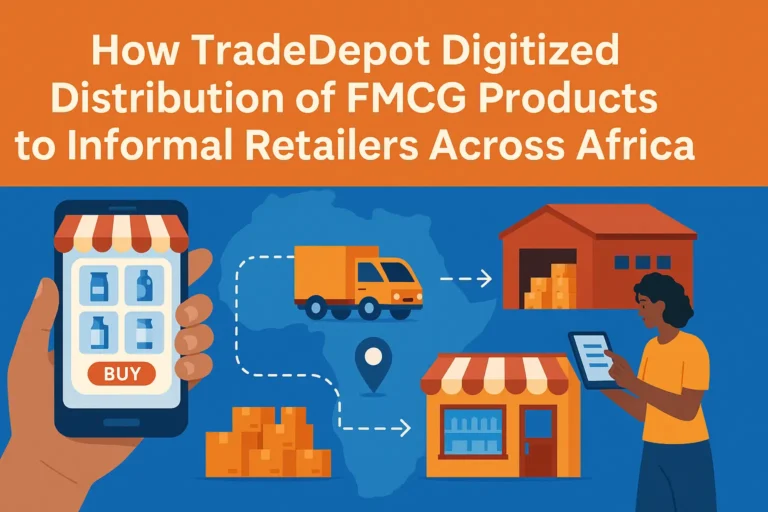
Route optimization is becoming an increasingly popular trend for logistics businesses and supply chains in a world filled with unexpected traffic jams and delays.
In a fast-paced world, route optimization is the closest logistics businesses have gotten to playing gods on the roads.
What is Route Optimization?
Route optimization is a handy tool for route planning. It is simply finding the most efficient route to travel between two points. Usually, a pickup and a drop-off.
With last-mile delivery becoming increasingly complicated, it has become necessary for logistics businesses worldwide.
In this article, we will discuss various aspects of route optimization, including how it works, its elements, and its importance. However, before that, we have to answer a very important question.
What is an Optimal Route?
You would be forgiven for thinking that an optimal route is the shortest one by distance. However, what happens when that route is choked up with traffic?
It doesn’t work very well, right? An optimal route is not about distance. It is all about time. Therefore, it is the route that has the shortest time from pickup to drop-off.
Elements of Route Optimization
There are four key elements to any route optimization process.
1. Distance
It is the space between all points involved. Whether in two or multiple locations. All things being equal, the shorter the distance, the better. However, considering other factors such as traffic, road closure, and many others, it generally plays a less significant role.
2. Vehicle/Fleet
The type of vehicle or fleet usually determines the speed at which your goods travel and, in many cases, the route you can take. For example, using a bicycle could be much longer or, in some cases, shorter if it can bypass the roads completely.
When you compare it to a car or truck, the latter is way faster but, in some cases, may not be able to take shortcuts.
3. Time
This is probably the most important element in the route optimization process. As mentioned earlier, it is all about time. Time is the period it takes to transport a product from the pickup point to the drop-off. 6
Customers wanting faster deliveries can make all the difference for supply chains or logistics businesses.
4. Customer
Now, route optimization is very important, and it is good practice to embed it in every delivery system whether or not the customer requests speedy delivery.
However, what do you do when there are multiple delivery options, and some customers are ok with a later delivery?
That is where the type of customer and nature of the delivery play a huge role in route optimization.
Importance of Route Optimization
Route optimization is an important tool in the delivery process, especially concerning customer satisfaction. So, of course, it has a few benefits.
1. Shorter order cycle time
The modern customer, especially for e-commerce businesses, is all about speed, speed, and more speed. Route optimization helps reduce transportation time, which also helps reduce the order cycle time.
2. Conservation of resources
With route optimization, you get to conserve resources you would have otherwise spent trying to navigate between the two points in question. Two important resources it helps you conserve are energy and vehicle life span.
3. Meet your target
In many cases, customers are on a schedule. This means you have a limited time frame to deliver the required goods to them. Route optimization helps you meet up with your schedule and impress your customers.
How Route Optimization Works
Route optimization analyzes complex algorithms with the elements mentioned earlier serving as key parameters to find the best possible route for each delivery.
To do this efficiently, it employs machine learning to analyze all factors, including historical route data down to the second, to eliminate routes that could cause delays for the driver or transportation process.
You would need route optimisation software to conduct route optimization effectively in the modern era.
Route Optimization Software
Route optimization software is a technology tool that simplifies route planning and optimization. It helps enhance and streamline the process through advanced algorithms, real-time data, and geographic information systems (GIS).
With this software, drivers can get real-time route updates, helping them enhance their transit and get to their destination faster with less.
What to look for in your ideal route optimization software
There are certain things to look for when choosing the ideal software, especially in Africa.
- Flexibility of use
- Ease of use
- Geocoding accuracy
- Speed
- Easy to integrate
Importance of Route Optimization Software
Just like the route optimization process, the software comes in handy.
- Real-time updates: It gives your drivers access to real-time route updates, allowing for more efficiency.
- Analytics and Reporting: With route optimization software, you can get reports and accurate analysis of all routes travelled, allowing your business plan better.
- Multiple Stops Planning: With route optimization software, you can plan for multiple routes at the same time it takes to plan for one, helping you save time.
- Integration: You can integrate the software with other logistic systems in your business, such as driver’s speed limit and monitoring software.
- Adaptability: The software can adapt to volume, traffic, and vehicle availability.
- Improved customer service: It is about the customer’s satisfaction. With the software, you have enhanced speed and shorter delivery times, guaranteeing a happy customer.
Challenges of Route Optimization Software in Africa
In Africa, transportation by road plays a huge part in trade within and across multiple countries. This means the software should ordinarily play a major role for logistic businesses on the continent. It does, but there are a few challenges.
1. Outdated Routes
It is no more news to wake up and realise that the route has been suddenly shut down without information shared through the proper channels. In fact, governments sometimes change road use, and people have to find out only when they get there.
Acts like this can make the entire planning and operation of no effect.
2. Poor Infrastructure
Infrastructure in Africa is a problem, and the roads are among the hardest hit. Roads across the continent are in dire need of repairs, making it a problem for vehicles. So many “short-cuts” in Africa are being shut down due to lack of maintenance.
Sometimes, it may take the vehicle longer to pass through these “shortcuts,” which causes a waste of resources for the businesses involved.
3. Lack of Security
The software often tells you to go through a particular route which it thinks is best. But in reality, that may not be the case, especially at night. Because you live in the community or region, you may be privy to more information beyond just the quickest distance.
Since you know those routes are quite dangerous for you and the goods in transit, what option do you or the driver have other than taking the longer route, rendering that particular investment void?
FAQs on Route Optimization
Q1: Can route optimization software be used in all industries?
Route optimization software is utilized in various businesses where transportation efficiency is critical, such as logistics, e-commerce, food delivery, field services, healthcare, etc.
Q2: What is the relationship between real-time data integration and route optimization software?
The software incorporates real-time data, such as traffic updates and weather conditions, to dynamically adapt routes as conditions change, assuring accurate and up-to-date planning.
Q3: Does the program assist drivers with turn-by-turn navigation?
Many solutions provide drivers with turn-by-turn navigation, guiding them along the optimal path and delivering real-time updates as needed.
Conclusion
Route optimization is a helpful tool for transportation industries across the globe. The software is even better. However, using them with the right parameters in place is important. There can be a few challenges, but it is usually limited to the right planning and education.

Obinabo Tochukwu Tabansi is a supply chain digital writer & ghostwriter helping professionals and business owners across Africa explore various strategies that work and learn from the success and failures of various supply chains across the globe. He also ghostwrites social content for logistics & supply chain businesses








